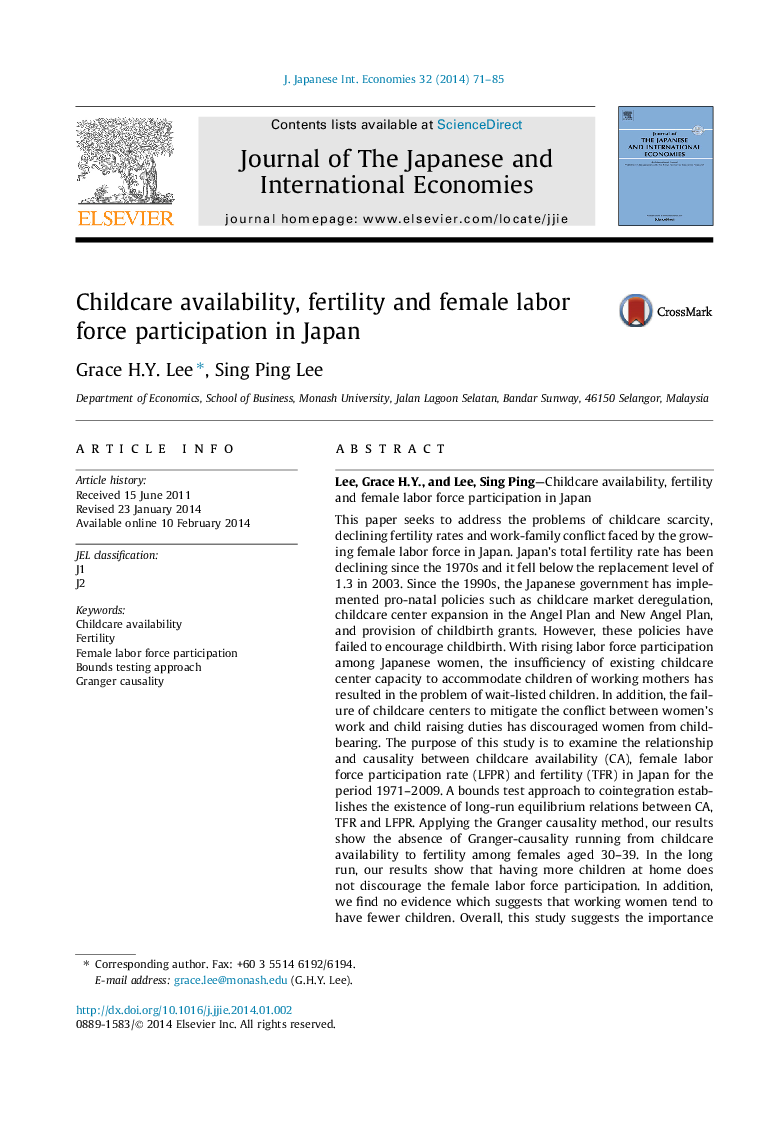| کد مقاله | کد نشریه | سال انتشار | مقاله انگلیسی | نسخه تمام متن |
|---|---|---|---|---|
| 964908 | 1479205 | 2014 | 15 صفحه PDF | دانلود رایگان |
• Childcare centers are insufficient to increase fertility for women aged 30–39.
• Having children does not hinder women aged 30–44 from working.
• No evidence to support the societal response and role incompatibility hypotheses.
• Importance of childcare system in supporting female employment.
This paper seeks to address the problems of childcare scarcity, declining fertility rates and work-family conflict faced by the growing female labor force in Japan. Japan’s total fertility rate has been declining since the 1970s and it fell below the replacement level of 1.3 in 2003. Since the 1990s, the Japanese government has implemented pro-natal policies such as childcare market deregulation, childcare center expansion in the Angel Plan and New Angel Plan, and provision of childbirth grants. However, these policies have failed to encourage childbirth. With rising labor force participation among Japanese women, the insufficiency of existing childcare center capacity to accommodate children of working mothers has resulted in the problem of wait-listed children. In addition, the failure of childcare centers to mitigate the conflict between women’s work and child raising duties has discouraged women from childbearing. The purpose of this study is to examine the relationship and causality between childcare availability (CA), female labor force participation rate (LFPR) and fertility (TFR) in Japan for the period 1971–2009. A bounds test approach to cointegration establishes the existence of long-run equilibrium relations between CA, TFR and LFPR. Applying the Granger causality method, our results show the absence of Granger-causality running from childcare availability to fertility among females aged 30–39. In the long run, our results show that having more children at home does not discourage the female labor force participation. In addition, we find no evidence which suggests that working women tend to have fewer children. Overall, this study suggests the importance of the Japanese childcare system in supporting female employment.
Journal: Journal of the Japanese and International Economies - Volume 32, June 2014, Pages 71–85
